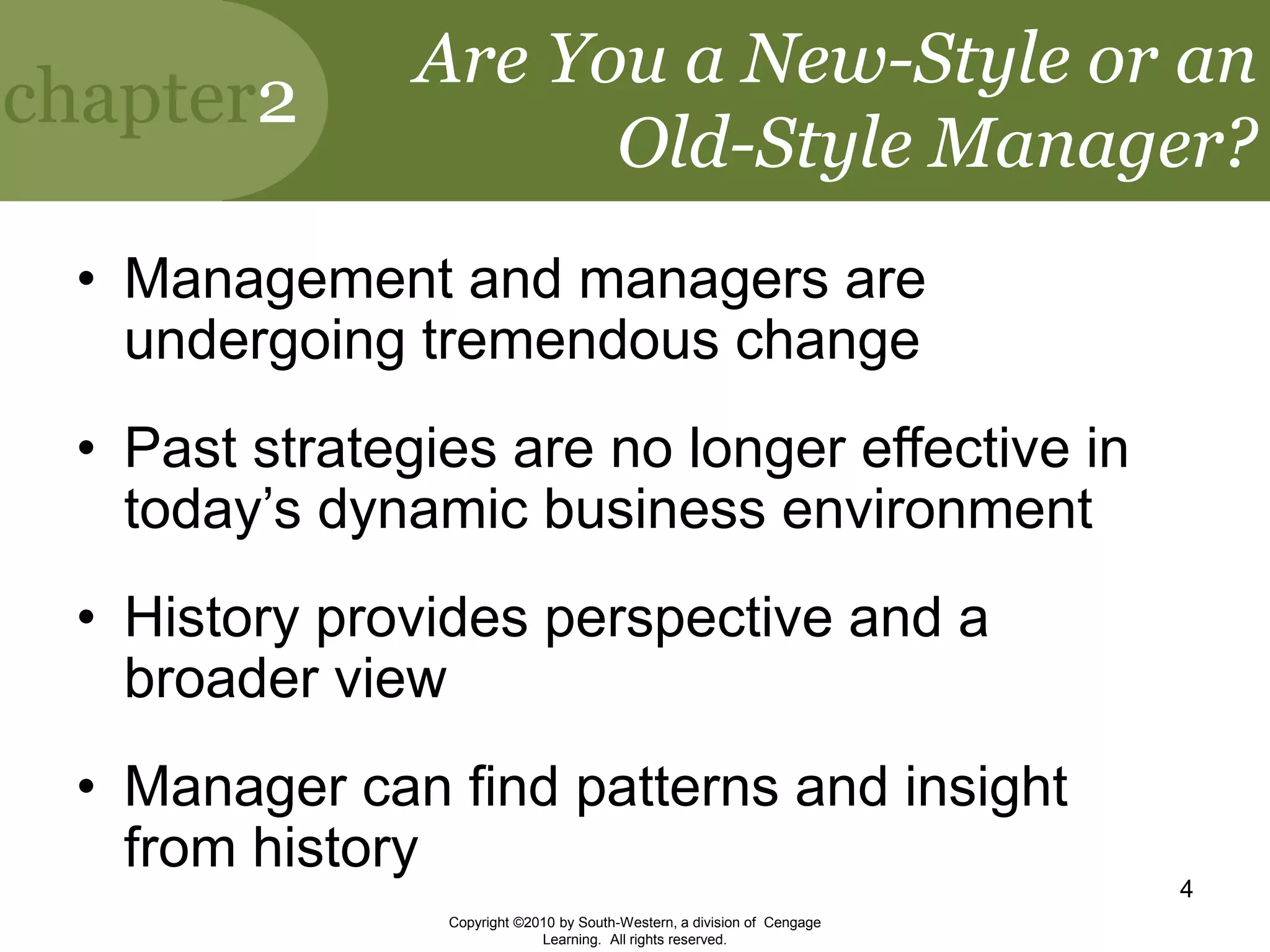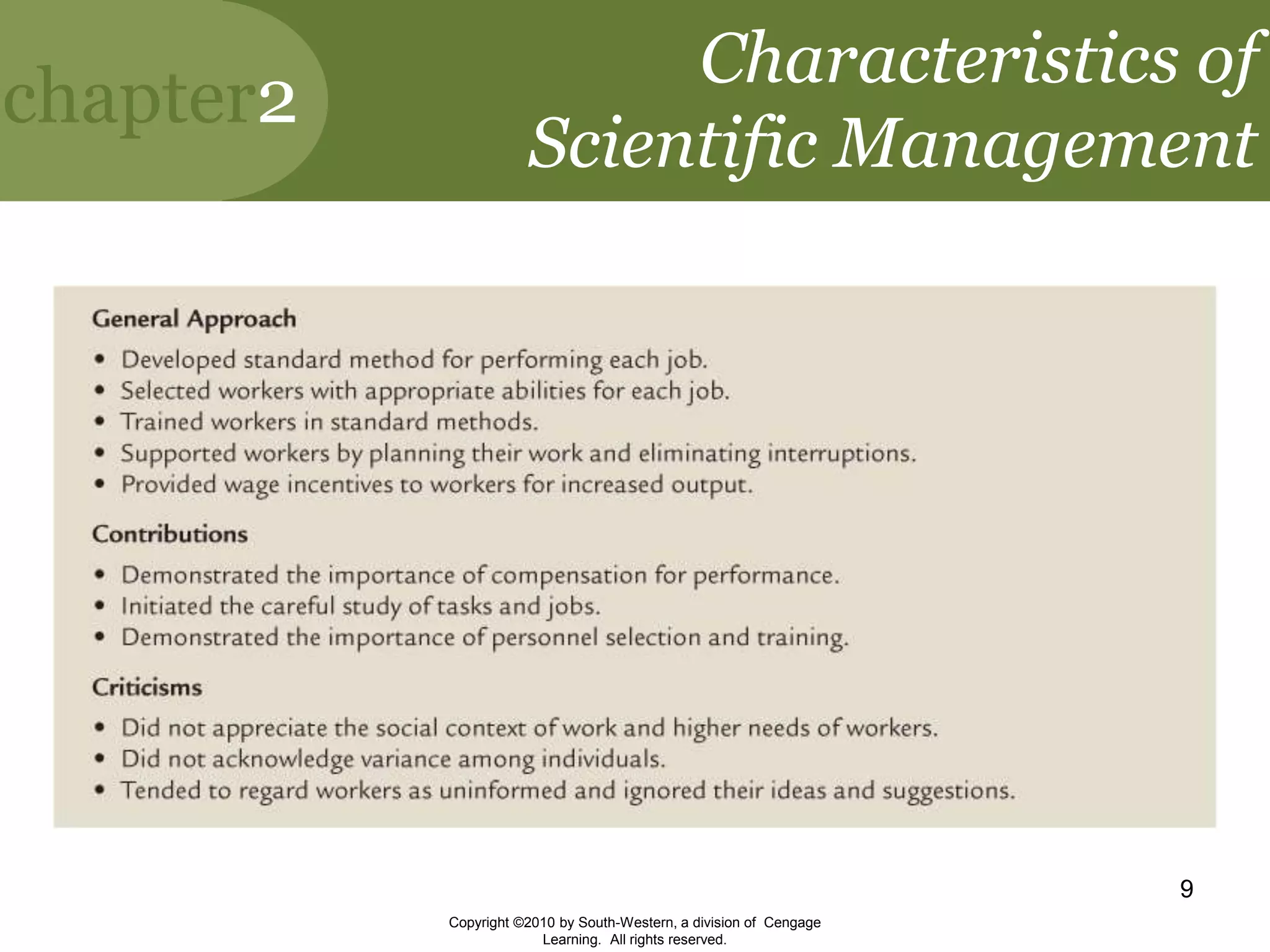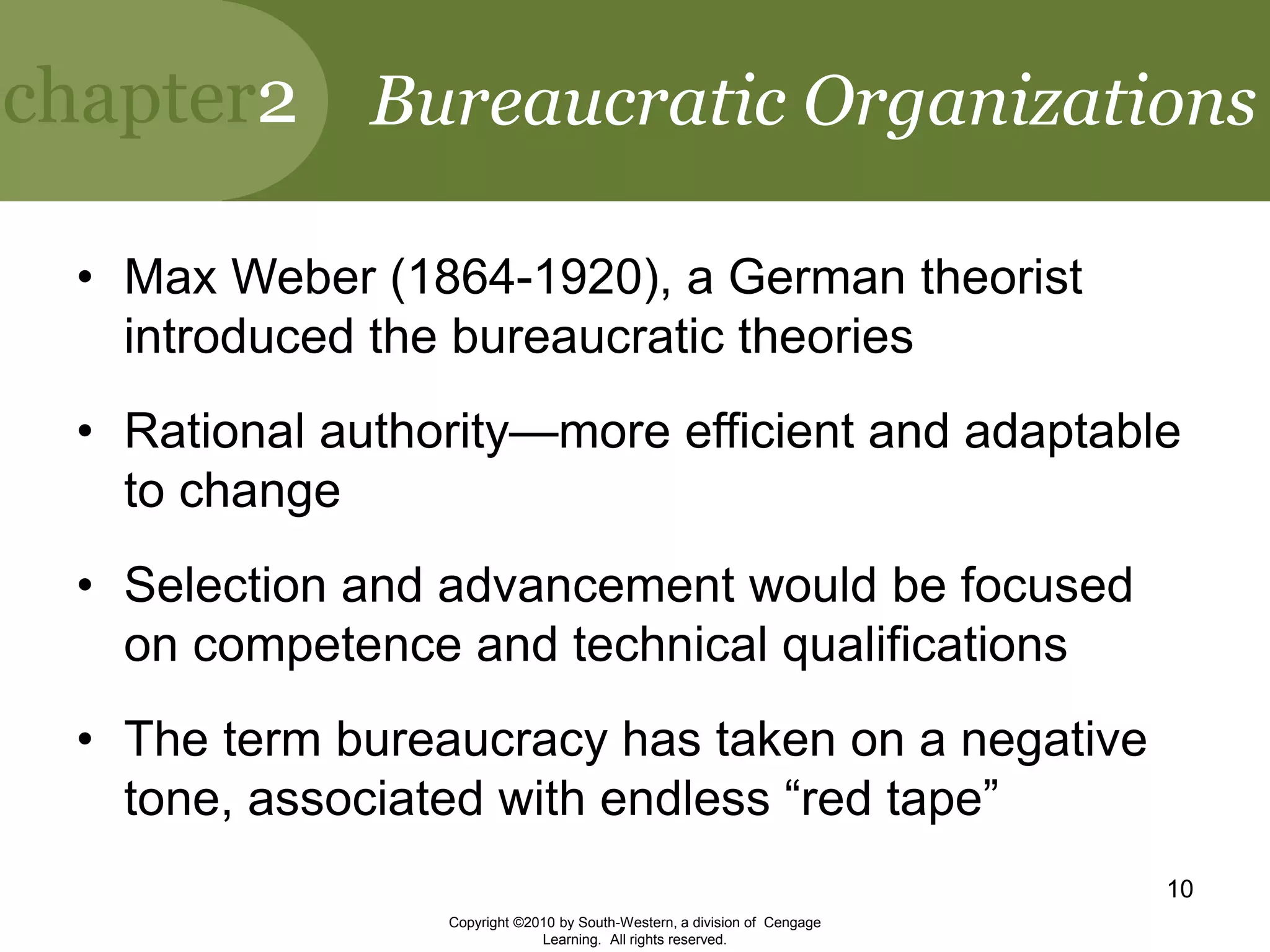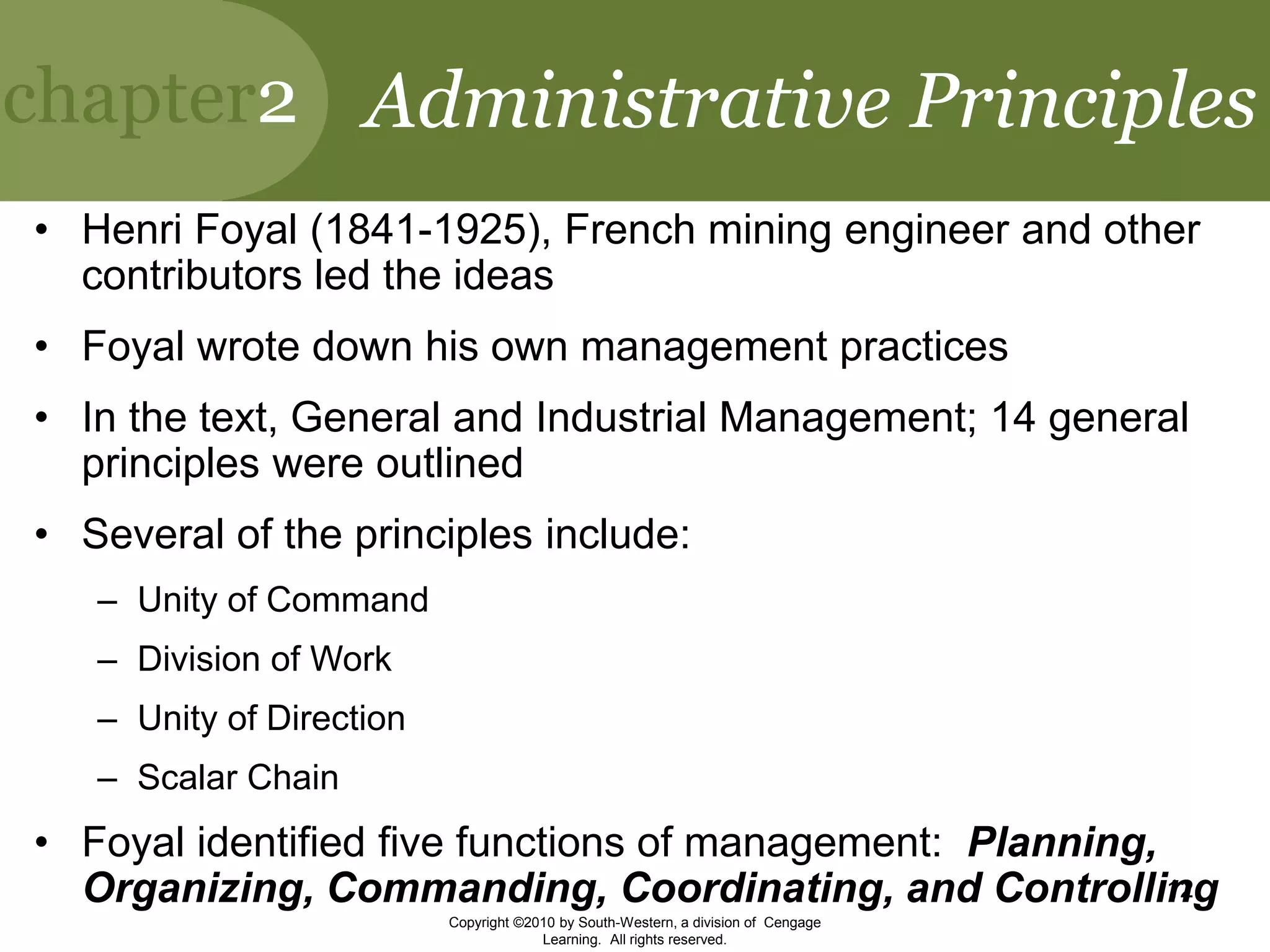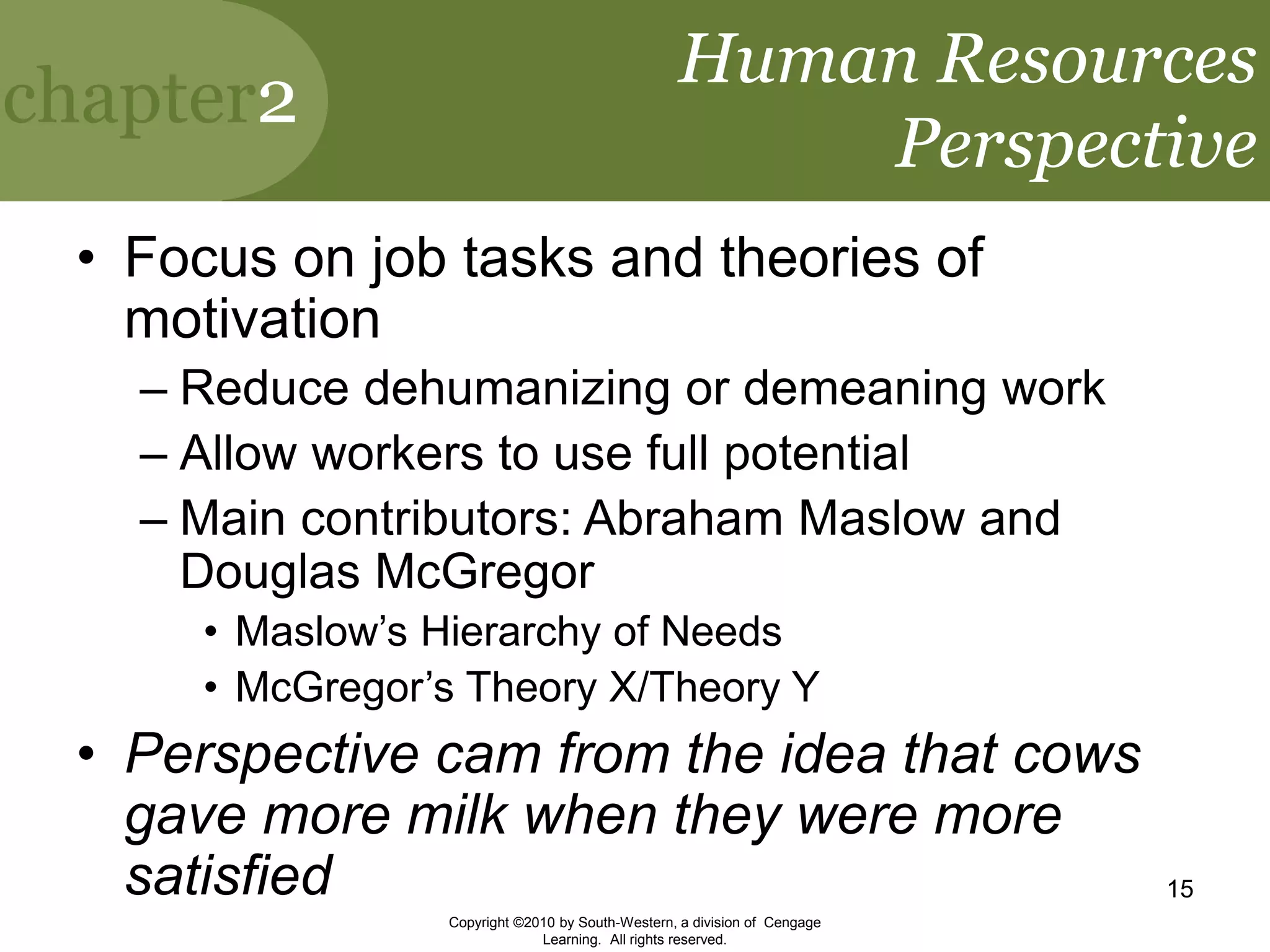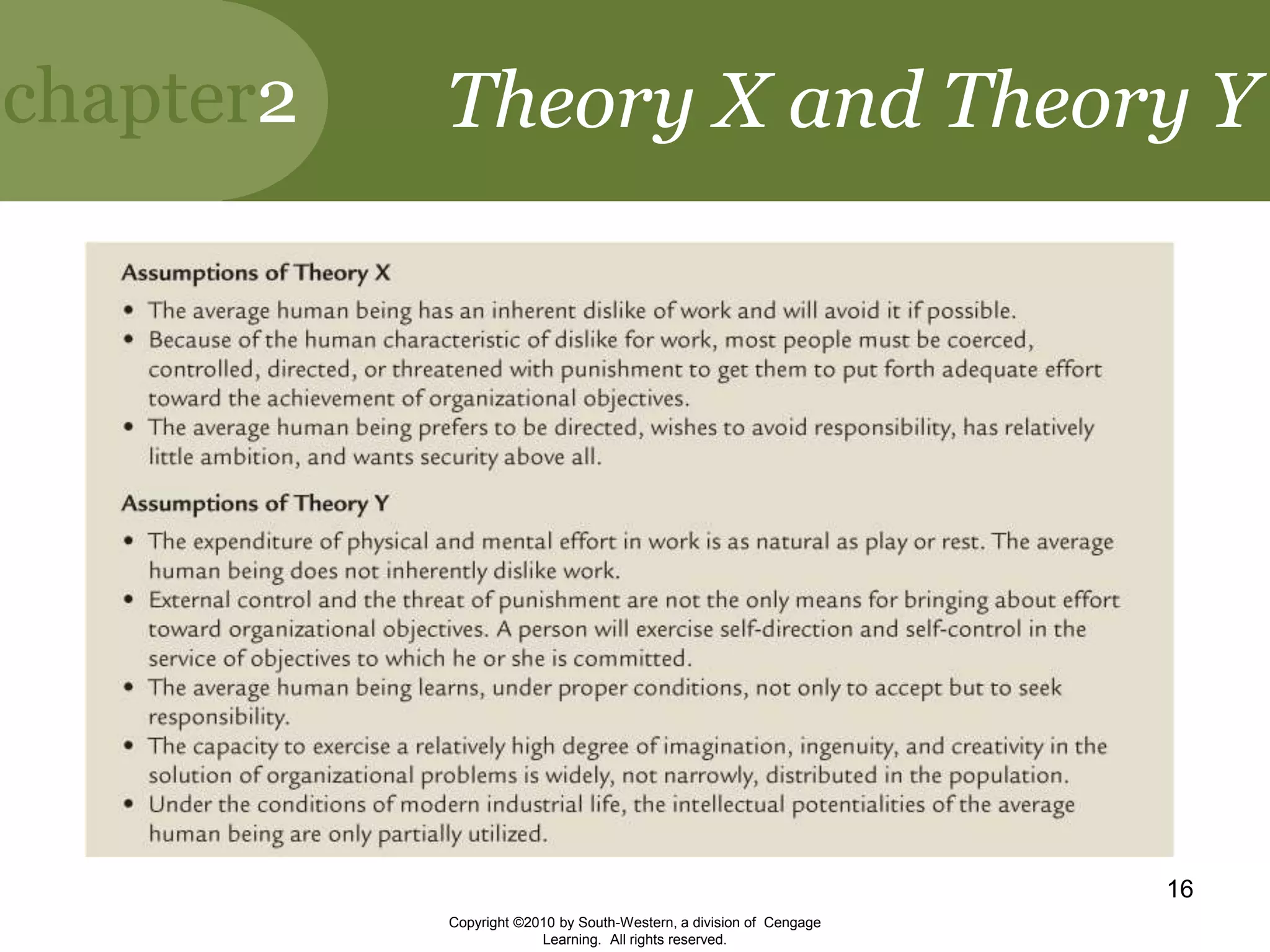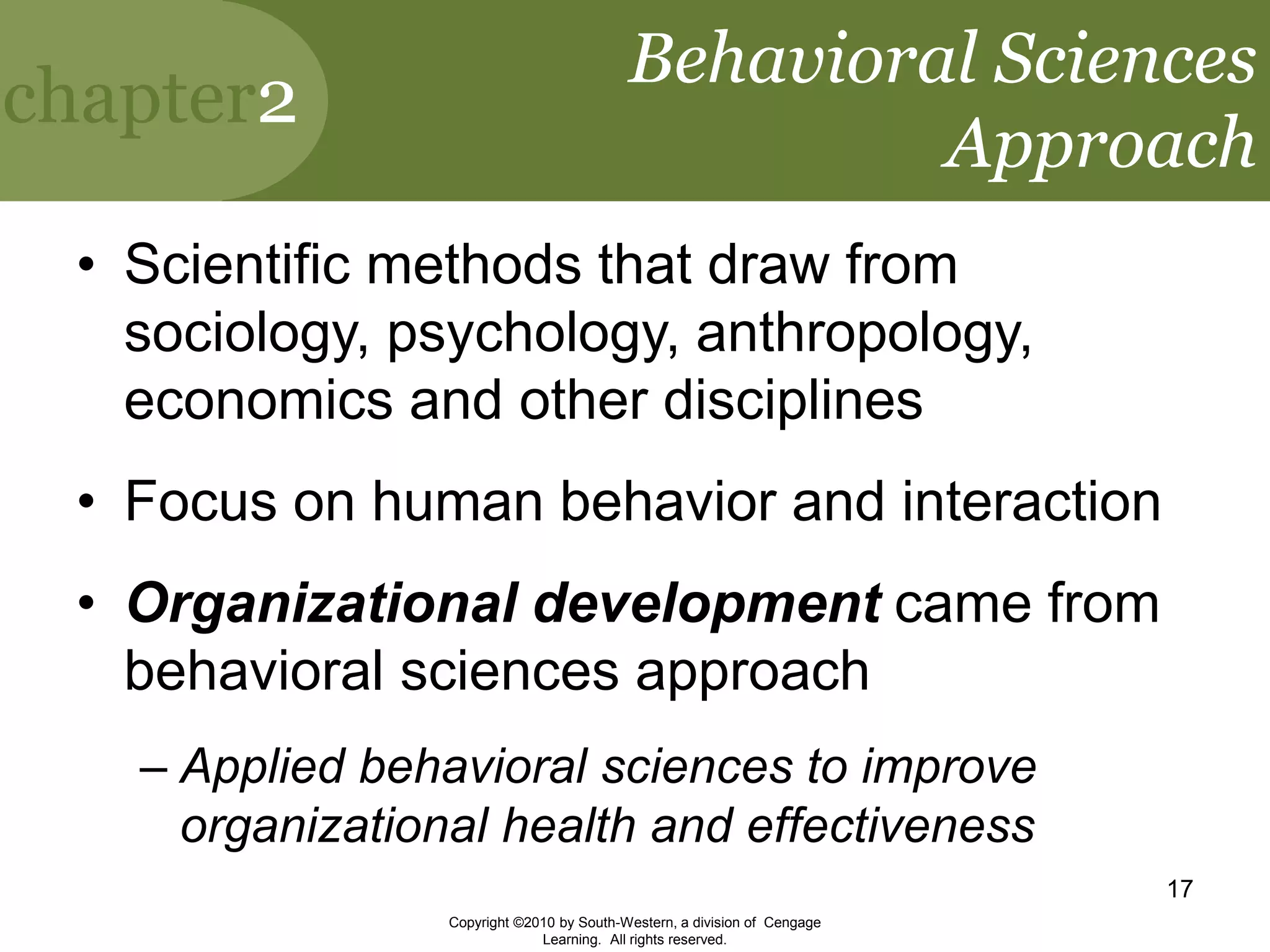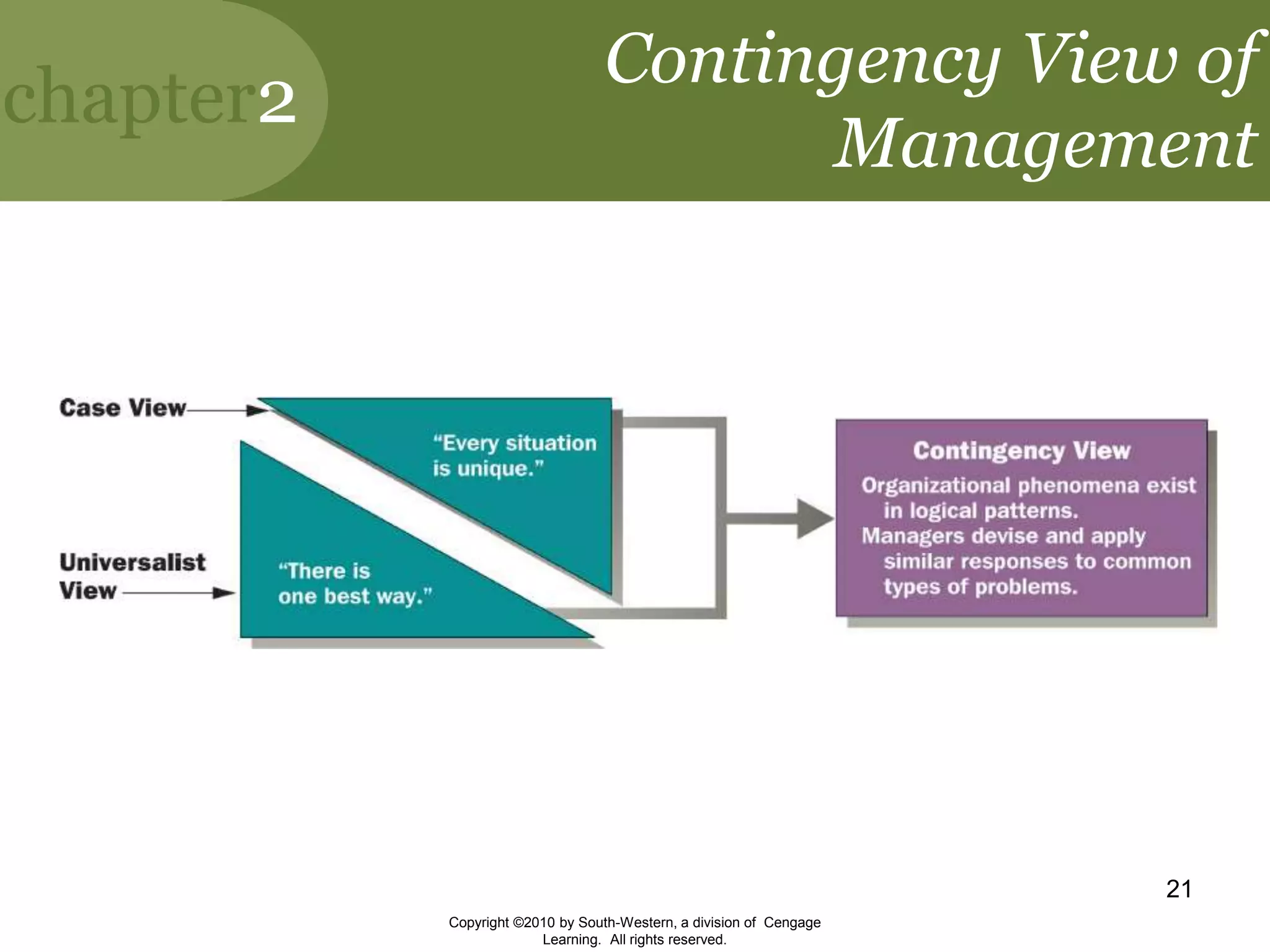The document discusses the evolution of management thinking over time. It describes several major perspectives in management including classical, humanistic, management science, systems theory, contingency view, total quality management, and learning organization perspectives. It also discusses how technology has changed management with developments like supply chain management, customer relationship management, and outsourcing. The document provides an overview of the historical development of management theories and changing approaches to management over time.



